Reb MacRath's Blog, page 6
December 25, 2017
My Surprise Christmas Gift--to Myself
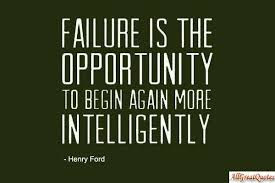
Have you ever given yourself a gift you never knew it was in you to give? I laid eyes upon mine this morning and cried out in a calm and dignified voice:

You see, I'd been facing a challenge that I couldn't guess how to beat. You all have yours and I had mine: how, as a busy writer with limited means, to transform my small, cluttered, barely furnished studio into a cool and cozy place...while looking for a better place and organizing what I have so that it's ready for use now--and when I do move. To begin with: the clutter was astonishing. Time and again, I would look, then give up, not knowing how or where to start.
The place is in this photo's not mine, but my place could more than compete:

Actually, my situation was worse in that I had no file cabinets or even a book case because I knew that additional furnishings would cost additional hundreds of bucks with a mover. And despite my Seattle successes--the loss of 55 pounds...12 ebooks and 4 print editions...a new job in a dream location--despite all that, I'd given up on solving my clutter dilemma while I prepared to move.
But then I gave myself this gift: the idea of tackling one tiny section each day, beginning with a window sill piled with godawful clutter..the next day proceeding to the next....and, when the 5 window sills were cleared, I'd set in on a single stretch beginning with the bed and carrying on to the north wall. On the 5th night, when the sills were cleared, I began to feel--well, almost buoyant. And I began to see the real beauty of the gift:
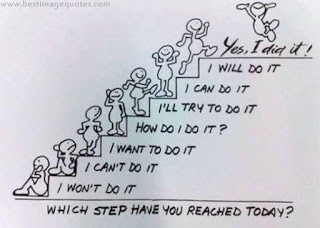
If I followed what I now saw as the Single Strip Procedure--tackling one two-foot strip at a time--I could accomplish both goals at once: neatly boxing what I don't need and arranging impeccably everything else. Not only that, as I proceeded I'd buy the furniture and furnishings I needed for the single strip at hand: new linens, for instance, for the bed, plus a bookcase and/or racks for books and DVDs.
The entire process should take me roughly a month. But I'm telling you, my friends: those window sill sure look terrific! And the first, bed-wide, strip is comin' right along.
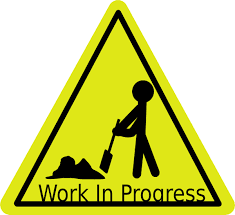
Published on December 25, 2017 09:54
November 29, 2017
Serial Thrillin': Conclusion and Bitchinest Surprise
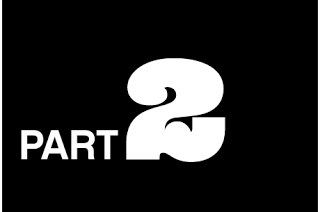
Welcome back.
Five knights. One theme, of interest to writers and readers alike: the rewards and challenges of a writing a mystery series...and succeeding at giving it legs. The five knights are listed in alphabetical order.
Carolyn Arnold
International bestselling and award-winning author, as well as a speaker, teacher, and inspirational mentor. She has four continuing fiction series and has written nearly thirty books: from cozy to hard-boiled mysteries, and thrillers to action adventures.
Claude Bouchard
USA Today Bestselling author of the fourteen volume Vigilante Series as well as Nasty in Nice, ASYLUM and Something's Cooking. Other interests include reading, playing guitar, painting, cooking, traveling and trying to stay in reasonable shape.
Joe Clifford
He is the author of several books, including Junkie Love, Lamentation, December Boys and Give Up the Dead, as well as editor of Trouble in the Heartland: Crime Stories Inspired by the Songs of Bruce Springsteen. He lives in Oakland, CA.
Bill Kirton
University lecturer, TV presenter, wood carver, playwright, actor, director, RLF Writing Fellow, novelist. Crap at marketing or promotional work and possibly the laziest knight at the table (so says he).
Brad Strickland
Author of 80 published books, including the ones he writes under the pen name of Ken McKea. These follow Florida detective Jim Dallas, who despite being retired on disability somehow can’t help running across murders. Brad lives in Georgia with his wife Barbara and a small assortment of varmints.
7) Any truth to the claim that readers want to see at least 5-6 entries in a mystery series before they’ll invest in a new author?
ARNOLDPersonally, I’ve never heard that before. And not to create any debate here—well, maybe some is good—but I read in a recent reader survey (not from my readers) that it doesn’t matter to most readers whether a book is part of a series or a stand-alone. And, yes, I realize this contradicts my earlier statement about readers being able to attach themselves to series characters. But I think what really matters to readers are strong and relatable characters that they want to spend time with and get to know better.
BOUCHARD
That’s hard to say because when I first published in 2009, I already had three titles and was at the 5-6 mark by the time Amazon opened Kindle to non-American writers in late 2010. I can certainly say having a number of titles has had a favourable impact on my sales when promoting a particular book or releasing a new one. Invariably, sales increase across the board.
CLIFFORD
I don’t know what that even fucking means. My sales have been good. Not great. But good. Very good. The people who like me seem to really like me. And like my ex-wives, there are plenty who don’t.
KIRTON
I have no idea. What occurred to me when answering the previous question, however, was that such topics are as much about the author as his/her creations. Carston might be quite happy to carry on his successful career as a detective, but do I want to be the one who reports his thoughts and actions? Would I rather probe into the mind of a mud-spattered, 35-year-old woman who rides a unicycle, works in a crematorium and knits rainbowMaybe, maybe not. I hit problems with number 5 that have nothing to do with the books—a close relative went into hospice care and I was one of the primary caregivers for three years. Then I suddnely got a couple of irresistible contracts for other books, so, man, I’m WAY behind. Check back with me when six books are out!
STRICKLAND
Maybe, maybe not. I hit problems with number 5 that have nothing to do with the books—a close relative went into hospice care and I was one of the primary caregivers for three years. Then I suddnely got a couple of irresistible contracts for other books, so, man, I’m WAY behind. Check back with me when six books are out!
8) How important is writing speed to a mystery series writer? And have you had to compromise to achieve that speed?
ARNOLD
Quality always trumps speed. I compromise nothing.
BOUCHARD
I understand the concept that a higher frequency of new releases can have a positive impact on sustaining sales (though quality obviously remains an important factor). However, I’ve always taken the time required to write each of my novels and I do not set deadlines. I don’t work with outlines so my writing speed varies depending on how quickly the storyline comes to together or not. As a result, I have ended up releasing three titles within a year at some point and only releasing one in a year at other times. I don’t compromise.
CLIFFORD
The biggest perk to writing a series is the speed. Soon as I start a Porter novel, I am back in that skin. For better or worse. Meaning, Jay Porter is not the most pleasant man to spend time with. He encapsulates the more frustrating aspects of my personality. That said, I know him like I know me. So the drafting process by book 5 is pretty quick.
KIRTON
Once I get into writing a new novel, it takes over. I want to know what happens. Most ‘normal’ activities (socializing, eating, sleeping) are an interruption of the fictional reality I’m living. I have no sense of time passing, of speed or lethargy. I’m in that moment of constant narration which can last many hours yet seem like an instant.
STRICKLAND
Well, I’d rather write it good than fast, but times winged chariot does hasten nigh, so basically it’s a question of get up, have a cup of coffee, write, wake up my wife, have breakfast, write, and then knock off to deal with real life—yardwork, repairs, paying bills, and so on. So it’s a compromise, really. If I buckle down, I can really knock out prose—in three years, for another project that I can’t say much about except it was written under contract, I did nearly three-quarters of a million words. However, that’s a lot of writing AND rewriting!
9) How much of you does your hero contain? Would you like to hang with him or her—and why? If you don’t, then why should we?
ARNOLDGuess I better say I want to hang out with them then! LOL But, of course, I want to hang out with my characters. That’s why I write stories with them over and over again. They all have qualities that, in part, reflect my own to an extent. So who doesn’t like hanging around with themselves? But, in all seriousness, my characters have many redeeming qualities and traits. I’ll touch on the main characters from my series.
Madison Knight is strong-willed and has a desire to right wrongs. She’s not going to let anyone pressure her into cutting corners on a murder investigation or stop her from following every single lead. She’s committed to finding justice no matter the sacrifice required from her.
Brandon Fisher is objective, while at the same time, he has empathy for the families of murder victims. I love his ragged determination to better himself, both as a person and as an FBI agent.
Sean and Sara McKinley are such genuinely nice and down-to-earth people, and their self-sacrificing spirit is something that really draws me to them. That and how they work well together, complimenting the other’s strengths.
BOUCHARDIf by hero, you mean my main protagonist, Chris Barry, I’d say he contains 100% of me albeit in a better looking and fitter package. We share the same initials, although that’s likely coincidence, and we think very much alike. I tend to believe he picked up his smart-assery and wit from hanging around with me for a number of years. We get along marvellously and he clearly trusts me enough to let me plan most of his life.
CLIFFORD
I seem to be anticipating these questions. Jay Porter is me. But I am not Jay Porter.
KIRTON
There’s lots of me in him – good and bad. Maybe putting our own fears and feelings into a fictional character is a form of therapy. I think if you put these questions to Carston, he’d say the same sort of things I’ve been saying. (But, equally, he might tell you to mind your own business.)
STRICKLAND
The qualities that I give to Jim are those I’d like to have myself. Yeah, I’d like to have a beer with him, shoot the breeze—but since I know him, I know he wouldn’t reveal too much of his inner thoughts and opinions to me or to anybody. He has a dark side, and he keeps it dark for his own reasons.
Me, what you see is pretty much it. Not saying I’d LIKE to have a dark side like Dallas—but I can see it would intrigue his friends (especially Sam, who is bright, cheerful, and brutal, though his brutality is packed away, and above all—curious). Might intrigue his women, too—though if one pries too much into what makes him moody, that will lead to a break-up.
What I’m saying, he’s flawed. Admirable in many ways, but—yeah, he’s flawed.
10) The death thing. Hell, let’s hit it too. Do you ever feel tempted to kill of your lead because s/he’s taking over?
ARNOLDI’ve never felt like killing them. I have had to step away from my computer because they’ve done something that either angered or saddened me. But it’s those instances when they “derail” from where I think they’re headed that make for the best scenes!
BOUCHARDAs mentioned in the previous response, Chris pretty much lets me run his life so I can’t accuse the man of trying to run the show. I have another character, Leslie Robb, who showed up in Book 5 and ended up taking much more room than I expected. While I thought she would be present only in that installment, she decided otherwise and has played integral roles in each book ever since. I’d never even think of killing her off though because she’d likely find out and I would be the one to go.
CLIFFORD
Tempted? Sure. Everything is on the table. But if you know, like me, that you are signed through at least five books, you can rest assured I’m not (*SPOILER ALERT) killing Jay Porter in book four.
KIRTON
In connection with the need to write the final Carston, I said to my wife I wasn’t sure what sort of ‘ending’ it should be. Her suggestion was that his wife should die. I was appalled. Kath is a terrific foil for Carston. Killing her (or him) would be like condoning all the evil things some of my villains have got up to.
STRICKLAND
Nope. He stays where he is until I need him, so I don’t feel tempted.
11) Be a villain for a moment, please. Might any parts of your history or personality add up to a memorable foe for your series hero?
ARNOLD
Maybe… But on the grounds of incriminating myself, I’ll keep quiet.
Published on November 29, 2017 12:40
November 15, 2017
Serial Thrillin': The Bitchinest Ripsnorting Round Table Joust: 1
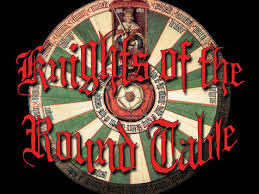
Five knights. One theme, of interest to writers and readers alike: the rewards and challenges of a writing a mystery series...and succeeding at giving it legs. The five knights, in alphabetical order:
Carolyn Arnold
International bestselling and award-winning author, as well as a speaker, teacher, and inspirational mentor. She has four continuing fiction series and has written nearly thirty books: from cozy to hard-boiled mysteries, and thrillers to action adventures.
Claude Bouchard
USA Today Bestselling author of the fourteen volume Vigilante Seriesas well as Nasty in Nice, ASYLUMand Something's Cooking. Other interests include reading, playing guitar, painting, cooking, traveling and trying to stay in reasonable shape.
Joe Clifford
He is the author of several books, including Junkie Love, Lamentation, December Boys and Give Up the Dead, as well as editor of Trouble in the Heartland: Crime Stories Inspired by the Songs of Bruce Springsteen. He lives in Oakland, CA.
Bill Kirton
University lecturer, TV presenter, wood carver, playwright, actor, director, RLF Writing Fellow, novelist. Crap at marketing or promotional work and possibly the laziest knight at the table (so says he).
Brad Strickland
Author of 80 published books, including the ones he writes under the pen name of Ken McKea. These follow Florida detective Jim Dallas, who despite being retired on disability somehow can’t help running across murders. Brad lives in Georgia with his wife Barbara and a small assortment of varmints.
1) Why write a mystery series instead of a series of mysteries?
Is commerce the main factor or is some other payoff at play?
ARNOLDI love being able to torture my characters over a longer stretch of time. And I don’t like saying goodbye to them. By writing a series, at least I know when I’m wrapping up a book, I’ll be with them again soon. I also believe readers love to get attached to characters and when you’re providing them with a series, they can do so knowing there will be more books coming.
BOUCHARD
From the time I started reading and then going forward, series have always been attractive, in large part due to growing familiarity of the main characters – think ‘Cat in the Hat’, ‘Bobbsey Twins’, ‘Hardy Boys’ and ‘Tom Swift’ before even getting to adult fiction. The same holds true with writing where one can develop and build one’s principal protagonists from one adventure to the next as compared to creating new, unknown characters with each new novel. Increased comfort exists when working with ‘people’ one already knows. The commerce factor obviously comes into play as many readers also enjoy said comfort and familiarity.
CLIFFORD
Like with any venture, there are pros and cons. The biggest “pro” is, if a series takes off, you have a built-in readership. Also in the plus column, a series allows you to examine a character and world a little deeper. Think Star Wars vs., say, well, any one-off sci-fi film. Most of all publishers love a series. Less risk, established commodity, etc. The downside is: if you don't have a series as popular as Lee Child, the average series writer often sees a dip in sales with each book and finds the critical response to be harsher, despite each book getting "better." At least that has been my experience.
KIRTON
I suspect that a mystery series is the better bet. If you can create one or more characters that intrigue the reader, characters they’d like to spend time with, that’s more likely to draw them into buying more of the books in which they appear. I suppose that’s why I call my series The Jack Carston Mysteries.
On the other hand, if you find a stand-alone mystery to be gripping, you instinctively trust the author to deliver again on suspense, thrills, horror, whatever.
STRICKLAND
A series allows a deeper exploration of the characters’ personality—strengths, flaws, problems, solutions. I like the notion of a broad canvas that gives a kind of epic sweep. In the case of Jim Dallas, Jim has issues to deal with and resolve. Through all the stories arcs the tale of his smoldering anger and bottled-up desire for vengeance, which will eventually pay off. I’m approaching a kind of midpoint which will begin the overall climax of the series.
So in a sense, a series is simply a group of oversized chapters in a longer story. There is, of course, also the consideration that a writer can invite readers to climb aboard for the whole journey—so a series tends to build readership. Have to say that commercial concerns aren’t the greatest with me, though they do factor in. From the get-go, I’ve had a definite goal in mind for the Jim Dallas stories.
2) For perspective, give us a few names of your favorite
mystery series writers.
ARNOLDI loved David Baldacci’s Camel Club series, and have also enjoyed some of the books in Janet Evanovich’s Stephanie Plum series.
BOUCHARD
Michael Connelly, Robert Crais, Lee Child, Jeffery Deaver, Jonathan Kellerman… Oh, you said a couple of names… Sorry. Anyhow, this is just a handful of writers who have consistently produced well developed, intricate storylines with strong, believable, three-dimensional characters. I never read a book by any of these authors which left me disappointed. I could mention that Child may have pushed it a bit on occasion but, then again, we are talking Jack Reacher.
CLIFFORD
I like what Lehane (more on him later), Sara J. Henry, Allen Eskens, and Matt Coyle are doing with their respective series. Of course there’s the granddaddy of them all: Phillip Marlowe.
KIRTON
Dalziel and Pascoe, created by the late Reg Hill, are great examples of powerful characterization and the dynamic created by a close friendship between different personalities. (Humour also helps a lot.)
I’m not sure whether Janet Evanovitch’s Stephanie Plum novels qualify as mysteries, but the characters are so memorable and so funny (especially Grandma Mazur) that I need a regular
therapeutic dose of them.
STRICKLAND
Jim Dallas owes a clear debt to Travis McGee and his creator, John D. Macdonald. I like the narrative voice in these—McGee is a principled, if “tarnished” hero (MacDonald’s own word) who teeters between wishing to resign from the over-complicated modern world with a drive to become involved with the victims of it. Similarly, Dallas pulled out of everything to lick his wounds (physical and psychological) after a traumatic encounter with organized evil, but he finds that campaigning for justice among the helpless cast-aside members of society helps him heal, and gets him ready for the challenge he knows is coming.
Another MacDonald, Ross MacDonald, is another inspiration. He took the tough-guy private-eye story to literary heights with his Lew Archer novels. I like his way with words and also his gift at plotting, which is not always on high display in this kind of story—for all his accomplishment, Raymond Chandler famously plotted by “having a guy come through the door with a gun” when things got slow. I don’t think there’s a finer, more jewel-like plot in private-eye fiction than in Ross MacDonald’s brilliant The Chill.
Both of these gentlemen give us a wry, world-weary, but game character who gives a problem his all—something I try to emulate.
3) Now to you...What is the most distinctive thing about your
mystery series?
ARNOLDI offer readers a strong female protagonist detective, a male rookie FBI agent, and a married, murder-solving duo. In every book I strive for procedural accuracy, and as a result have been praised by law enforcement. This has led me to take on the brand line POLICE PROCEDURALS RESPECTED BY LAW ENFORCEMENT.™
BOUCHARD
Likely the most distinctive thing about my mystery series is all my main characters are Canadian yet none of them say, “Eh,” at least not when I’m around. Also, the members of the ‘Discreet Activities’ team are all well educated with respectable, professional backgrounds as well as smart, witty and highly sociable yet they kill for a living.
CLIFFORD
That they work both as standalones and part of an overarching storyline. Also I am hoping to shine a light on the grave injustice perpetuated against my father, namely that the Manafort family (yes, those Manaforts) and their greedy, gross misconduct directly led to my father’s premature death.
KIRTON
Hard to say. Humor's essential, even (or maybe especially) in the more gruesome cases, and I like the idea that people don’t automatically divide into goodies and baddies. My detective has no particular vices. He’s happily married to a wife who matches him for wisecracks, and yet constantly finds himself thinking politically incorrect things and chastising himself for it. I also end each book with a little scene designed to say ‘OK, reader. The mystery was solved and everything’s back in place – except that’s not the way the world works – different bad things keep on happening.
STRICKLAND
I think it might be the blend of humor and detail. I get letters about how real the background is—“I ate in that restaurant!” “I know exactly where that river is!” and so on. Having Sam Lyons as a foil character gives me a chance for a lot of repartee and shaggy-dog jokes, which I love. But capturing something of the Florida milieu (changed even from the days of Travis McGee) also gives the stories a kind of flavor. Still to come are a story that takes place, partly, at a theme park (I have relatives who worked for two of the biggest ones) and one that will feature intrigue at a posh Miami hotel, secretly falling on hard times but keeping up a front. I think the details in these will ring true. I have my informants. . . .
But the truth of the background is meant to reinforce the psychological truth of the characters.
4) Can your books be read as stand-alones or should/must
they be read in sequence?
ARNOLDThey can be read as stand-alones.
BOUCHARD
Each of the thirteen installments of my Vigilante series to date is a complete story and can therefore be read as a standalone. However, as with most series, reading them in sequence allows for a better flow in terms of character introduction and development. In addition, past events are occasionally referenced or directly related to the plotlines of later installments which also supports sequential reading as the best option.
CLIFFORD
As stated above, both, although obviously reading in order is preferable. You simply get more.
KIRTON
Mine are conceived as stand-alones, but in the knowledge that I have a group of people I know quite well and whom I trust to be themselves.
On the other hand, my two historical mysteries are only a pair because readers asked for a sequel to the first one in order to know how a particular relationship developed. I still think each is self-contained but reading them in sequence would add to the pleasure. (Some readers have now asked for a third, so it may become a series after all.)
STRICKLAND
I have no trouble writing them so they’re stand-alones, though I think they may make more emotional sense if read as part of an extended story. That’s when you begin to make the connections and to see the character development.
5) As a series writer, how do you handle back story from book
to book—scatter shot or concentrated loads? How do you
contrive to give just enough details for anchors?
ARNOLDI’m definitely more a “scatter shot” when it comes to backstory. I provide just enough—and what’s needed—for the current story I’m telling. Obviously if a tidbit about a character’s history is irrelevant to the current plot line, I leave it out.
BOUCHARD
Concentrated loads were used in earlier books with a gradual transition to scatter shots as required as the series progressed. With the fourteenth installment in the works, it becomes somewhat repetitive and redundant to present readers with too much detail relating to ancient history. Sufficient albeit brief data is supplied to new readers in later books to identify characters with the assumption (and hope) that curiosity will lead them to read past installments they’ve missed. As an example from my current WIP, the reader learns of Chris Barry’s financial success years earlier from a line or two of simple dialogue.
CLIFFORD
This is the challenge with each book, and I’ve tackled this task in different ways. You want to avoid the dreaded “auto-dump.” In the latest Jay Porter novel, BROKEN GROUND, for instance, we begin at an AA meeting with Jay speaking, which allowed me to get in a lot of the back-story organically.
KIRTON
I leave it to the characters – which sounds, but isn’t, glib. Each member of Jack Carston’s team has distinct characteristics. Their idiosyncrasies provide the familiarity and continuity to suggest a well-established team who are used to and respond to one another’s behaviours. They are the back story.
STRICKLAND
I leak a little at a time. In the current one, the one I’m writing, we’re going to find out a bit more about the rough ride that Jim had when he worked for Internal Affairs back during his police days. He hasn’t talked much about that—but let’s say that his involvement may have made him say and do a few things that he deeply regrets, that go against his character. More of this will come out as the books go on. In the end, I think a reader can jigsaw together a valid portrait of him that will seem true to life.
6) The age thing. Hell, let’s hit it. Does your hero age/change
very little over the course of the series (Hercule Poirot, Kinsey
Malone, James Bond, Spenser)...or age and change
progressively (Harry Bosch)?
ARNOLDThere’s definite growth to the characters in all my series. Detective Madison Knight started off really rough around the edges. She’s still a hard-nosed detective who will do whatever it takes to find justice for murder victims, but she’s softened on a personal level. She used to be terrified of committing herself to a romantic relationship, but that’s a thing of the past. I think I might even hear wedding bells in her future. But that’s still a few more books out from—if it does happen.
Brandon Fisher started out as a new agent with the FBI in book one. As readers progress in the series, they are taken along the journey of him becoming a full-fledged agent with the BAU.
The McKinleys went from being homicide detectives for Albany PD to amateur sleuths to private investigators. That involved a lot of growth.
BOUCHARD
Chapter headings in each of my books include actual dates to establish a timeline. Book 1 was written in 1995 and set in 1996 while my last release took place in 2016, twenty years later so, yes, my characters have aged. Luckily, they were young enough at the start and I make damned sure they stay in shape from one story to the next.
CLIFFORD
Each book in the Porter series is a year later, which brings us up to the current year
KIRTON
Interesting question because the next Carston story will be the last. Without me trying to impose ageing on him, he’s been changed by the experiences of the crimes he’s solved and the individuals he’s met in the process. I’ve no idea what he’ll do in retirement, but his tendency to try to make light of things and just enjoy life has been severely eroded by the ongoing evidence of man’s inhumanity to man (and especially woman).
STRICKLAND
Heh. Ellery Queen was always 35, until somewhere between books he had a growth spurt and wound up being 57. Jim is aging—the stories are set along a time line of five or six years, and he’ll reflect that in the stories.
*****
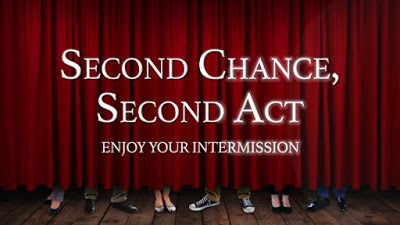
Take seven, as in seven days, to stretch and think about Part 1. Next week we'll return with the provocative conclusion. Among other things you'll learn--but no, mustn't ruin the surprise. You'll also meet a surprise guest. Arrive early for guaranteed seating.
*****
To learn more about these authors and their books, click on the
following links:
Carolyn ArnoldWebsite: carolynarnold.netFacebook: https://www.facebook.com/carolyn.arnold.564Twitter: https://twitter.com/Carolyn_ArnoldNew title releasing November 28: http://carol0ynarnold.net/power-struggle/
Claude Bouchard
Amazon Author Page: http://www.amazon.com/Claude-Bouchard/e/B002BLL3RKWebsite: http://www.claudebouchardbooks.com
Vigilante Series Box set - Books 1 to 6: http://www.amazon.com/dp/B01EPE926Y
Joe Clifford
Website: http://www.joeclifford.com
Bill Kirton
Amazon Author Page: http://amzn.to/2xz2wSN
Website: hhtp://www.billkirton.com
Book to introduce readers to my work: The Darkness (see answer 11 in Part 2)
http://amzn.to/2gtWVqX
Brad Strickland
Amazon Author Page: https://www.amazon.com/Ken-McKea/e/B00J22N6PS/ref=sr_tc_2_0?qid=1508850962&sr=1-2-ent
Published on November 15, 2017 06:00
November 2, 2017
Revisiting a Crash Site
Today at 4:40 I'll set sail by trail again, this time to Atlanta. And I'm in finer fettle than I was twenty months ago, when I set out for Buffalo after suffering a serious fall. No wheelchair required to get me to the train. No cane required to take even three steps.
Still, this pales beside the changes I've gone through since I left Atlanta nearly twenty years ago. Atlanta was my crash site in more ways than I care to recall: marital, emotional, spiritual, publishing, employment, financial, physical...
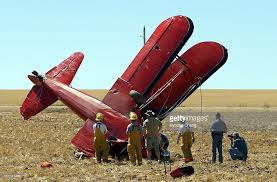
Though I lack the hubris to announce a perma-happy ending, I can tell you: things have changed, in most ways for the better. I moved to Seattle three years ago...I've published a dozen ebooks, three of them published in print editions by Hold Fast Press. Recently, I started working for a world-class company, with transfer potential after a year to anywhere I please. I'm happily at work on a new mystery series. And, oh yeah, I've lost fifty-plus pounds, thanks to going Vegan and returning to the gym.
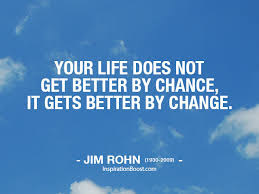
So my spirits are high as I prepare to depart. In Atlanta I'll meet with two writers, Brad Strickland and Lev Butts...and, hopefully, one or two other old friends. On the train I'll get some reading done and put in more hours on my WIP..
And I'll pay my respects to that crash site that made way a phoenix rebirth.
Till then, I'll do the thing I love best in this world, next to writing: damn right, board another train.

Still, this pales beside the changes I've gone through since I left Atlanta nearly twenty years ago. Atlanta was my crash site in more ways than I care to recall: marital, emotional, spiritual, publishing, employment, financial, physical...

Though I lack the hubris to announce a perma-happy ending, I can tell you: things have changed, in most ways for the better. I moved to Seattle three years ago...I've published a dozen ebooks, three of them published in print editions by Hold Fast Press. Recently, I started working for a world-class company, with transfer potential after a year to anywhere I please. I'm happily at work on a new mystery series. And, oh yeah, I've lost fifty-plus pounds, thanks to going Vegan and returning to the gym.

So my spirits are high as I prepare to depart. In Atlanta I'll meet with two writers, Brad Strickland and Lev Butts...and, hopefully, one or two other old friends. On the train I'll get some reading done and put in more hours on my WIP..
And I'll pay my respects to that crash site that made way a phoenix rebirth.
Till then, I'll do the thing I love best in this world, next to writing: damn right, board another train.

Published on November 02, 2017 10:48
October 19, 2017
You and the Miracle of Your Third Draft
Some call the first draft the vomit phase.

Others may see it as something like this:
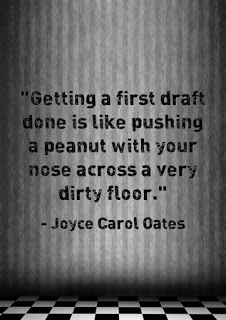
In any case, the first goal is getting the words on the page, day by day. In good time, we meet that goal. And whatever hell we went through is soon to be forgotten when we start the second draft.
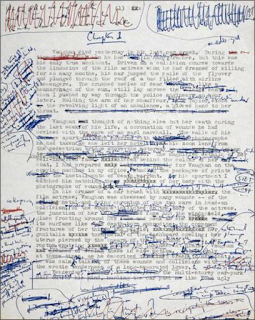
Do all writers go through such back-breaking work? Not all, but many. Perhaps even most. Here's a look at the great Nabokov conquering a second draft:
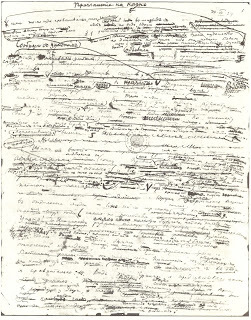
The work's as exhausting as digging a ditch with a teaspoon instead of a shovel. Simply clearing the vomit or shit off each page is enough to make a writer weep, howl at the moon or cry 'Never again!'
And the worst of it is this: no matter how greatly we improve the first draft, we're still nowhere near completion of a finished, professional work. Yes, we've pruned and edited, polished and filled in some blanks. And we've begun to see the outline of our book. But it's still just a sack of potential
The third draft, however, gives us the chance for a wonderful break from ditch-digging and drudgery. Now we get to put on our Architect hats. We can forget about Pretty or Perfect for now. Time to think of our narrative's structure...and where the structure may need reinforcements.
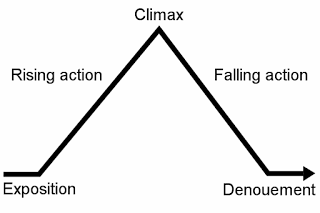
Here are some of the issues I'm tackling in the third draft of my WIP:
1) My book's divided into five acts. Are they roughly the same length and is my pacing on the mark?
2) My book contains shifts of POV. Do my two lead characters get close to the same stage time? And have I made it clear enough to readers at a glance to identify who's 'on' now?
3) Have my mystery's clues been fairly and effectively placed?
4) Have my characters done the detecting they should have done at all key points?
5) Have I brought my setting to life, buckshot-style, with just enough details as needed?
6) Have I succeeded on two fronts: launching a new spin-off series from my Boss MacTavin mysteries...and not giving readers the backstory blues?
7) Though this is a standalone series, is it completely consistent with the Boss MacTavin universe?
8) Can I do anything else to reinforce the novel's theme? Colors, imagery, weather, etc.
Now, with the clearance work you've done, is the perfectly natural time for such things. When they've been tackled, you're prepared for the delicate refinements of your fourth and final drafts.
If you don't believe in miracles, give this one a try.
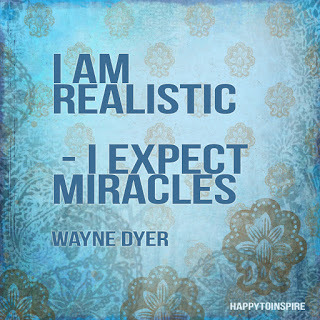

Others may see it as something like this:

In any case, the first goal is getting the words on the page, day by day. In good time, we meet that goal. And whatever hell we went through is soon to be forgotten when we start the second draft.

Do all writers go through such back-breaking work? Not all, but many. Perhaps even most. Here's a look at the great Nabokov conquering a second draft:

The work's as exhausting as digging a ditch with a teaspoon instead of a shovel. Simply clearing the vomit or shit off each page is enough to make a writer weep, howl at the moon or cry 'Never again!'
And the worst of it is this: no matter how greatly we improve the first draft, we're still nowhere near completion of a finished, professional work. Yes, we've pruned and edited, polished and filled in some blanks. And we've begun to see the outline of our book. But it's still just a sack of potential
The third draft, however, gives us the chance for a wonderful break from ditch-digging and drudgery. Now we get to put on our Architect hats. We can forget about Pretty or Perfect for now. Time to think of our narrative's structure...and where the structure may need reinforcements.

Here are some of the issues I'm tackling in the third draft of my WIP:
1) My book's divided into five acts. Are they roughly the same length and is my pacing on the mark?
2) My book contains shifts of POV. Do my two lead characters get close to the same stage time? And have I made it clear enough to readers at a glance to identify who's 'on' now?
3) Have my mystery's clues been fairly and effectively placed?
4) Have my characters done the detecting they should have done at all key points?
5) Have I brought my setting to life, buckshot-style, with just enough details as needed?
6) Have I succeeded on two fronts: launching a new spin-off series from my Boss MacTavin mysteries...and not giving readers the backstory blues?
7) Though this is a standalone series, is it completely consistent with the Boss MacTavin universe?
8) Can I do anything else to reinforce the novel's theme? Colors, imagery, weather, etc.
Now, with the clearance work you've done, is the perfectly natural time for such things. When they've been tackled, you're prepared for the delicate refinements of your fourth and final drafts.
If you don't believe in miracles, give this one a try.

Published on October 19, 2017 14:31
September 30, 2017
The Lost Art of Waking Up: a Pictorial
Somewhere along the line, we forget how to wake up refreshed and renewed. And instead we awaken like this:

Correction: we wake up like that after hitting Snooze repeatedly:
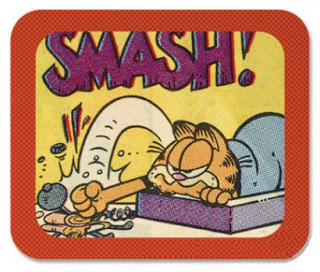 .
.
Finally, we lumber up and stumble on in search of clothes and keys and everything we'll need--the most important of which we will always forget.
So, no matter what we wear...no matter what we don't forget...the message we send to the world will be this:
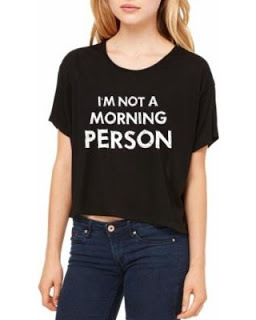
Okay, then. Let's take these as givens:--Good diet--Good health---6-8 hours' sleep every night
If so, why would we need Snooze alarms? I have a theory about this. I don't claim that it's profound but it's been tested--and it works:
Our mindset when we go to bed determines our state in the morning. For better or worse, we continue where we left off the night before. And we'll continue for the worse if we retire in a negative or aimless state, I propose a three step plan to ensure that we wake for the better.

1) Eat lightly after 6 p.m.. Your last meal doesn't have to be what you see in the picture above. But keep it light, something easily digested.

2) That's right, meditate--in any position you like: sitting in a cozy chair or thinking while you stretch. Your meditation can be a review of the day: what went well or might have gone better. Review your blessings while you're at it. A positive 15-minute spiritual stretch will prepare you for a deeper and more restful sleep.
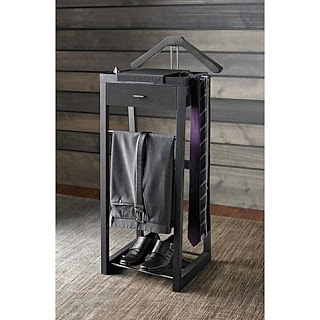
3) This is my own master key: a Kenneth Cole standing valet. My solution to maddening mornings spent looking for my keys, deciding what to wear and learning when I've left home that I've forgotten something. After my spiritual stretch, I set myself up for the morning--everything I'll need, from clothes to keys to change to my wallet, etc. I go to bed in a decisive state as well as a positive, calm one.
The process is a simple one. Whether you use it or one of your own, be true to it and you'll enjoy wht you've missed for far too long:


Correction: we wake up like that after hitting Snooze repeatedly:
 .
.Finally, we lumber up and stumble on in search of clothes and keys and everything we'll need--the most important of which we will always forget.
So, no matter what we wear...no matter what we don't forget...the message we send to the world will be this:

Okay, then. Let's take these as givens:--Good diet--Good health---6-8 hours' sleep every night
If so, why would we need Snooze alarms? I have a theory about this. I don't claim that it's profound but it's been tested--and it works:
Our mindset when we go to bed determines our state in the morning. For better or worse, we continue where we left off the night before. And we'll continue for the worse if we retire in a negative or aimless state, I propose a three step plan to ensure that we wake for the better.

1) Eat lightly after 6 p.m.. Your last meal doesn't have to be what you see in the picture above. But keep it light, something easily digested.

2) That's right, meditate--in any position you like: sitting in a cozy chair or thinking while you stretch. Your meditation can be a review of the day: what went well or might have gone better. Review your blessings while you're at it. A positive 15-minute spiritual stretch will prepare you for a deeper and more restful sleep.

3) This is my own master key: a Kenneth Cole standing valet. My solution to maddening mornings spent looking for my keys, deciding what to wear and learning when I've left home that I've forgotten something. After my spiritual stretch, I set myself up for the morning--everything I'll need, from clothes to keys to change to my wallet, etc. I go to bed in a decisive state as well as a positive, calm one.
The process is a simple one. Whether you use it or one of your own, be true to it and you'll enjoy wht you've missed for far too long:

Published on September 30, 2017 06:48
September 16, 2017
Lies, Lies and More Damned Lies
I'm in a rare state of despair today because I've learned once again that ads are often jut cold, polished lies.

My state began a while back when learning that the bottled water on which I'd been spending so much of my money was actually just tap water. The story's here, if you care to look. But you've probably already had doubts of your own.
http://www.collective-evolution.com/2016/01/25/pepsico-finally-comes-clean-and-admits-the-truth-about-their-bottled-water/
True, none of us could have expected that our designer tap water might actually threaten our health--with something like...oh, say...a tapeworm:
https://www.youtube.com/watch?v=J7mNTpRB9F0
Still, life went on. My despair ebbed as I started watching closely, and more closely still, the food I put into my body. I eyed the labels like a hawk, on the watch for sugar in any form, preservatives, etc.
But I read a story this week that rocked my boat and should rock yours. Whether you're a Vegan, vegetarian or meat lover, the same question concerns us all: can we trust the labels or even the stores? Is 'organic' food really organic? Are 'cage-free' chickens actually cage-free? Are 'grass-fed' cows actually grass-fed? Is 'free range' actually so?
Here's one ad that sure sounds good, for yummy free range chickens:
http://www.maryschickens.com/
But:
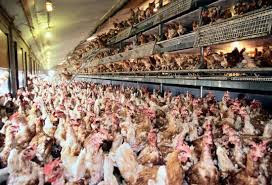
'Direct Action Everywhere, whose mission is to create animal welfare-friendly cities and outlaw factory farming practices, visited a dozen Pitman farms and never once saw a chicken roaming outside. The group reported that it found no indications of outdoor living, such as feathers or fecal matter. Twenty-four hour surveillance cameras attached to six separate locations revealed no outdoor birds either, the activists said. Instead, chickens were packed shoulder-to-shoulder inside dusty sheds with degraded air quality, forced to challenge one another for access to food and water.'
--the intercept.com, 9/15/17
So free range may mean, Dasani-style, not cage-free.
And does cage-free actually mean anything better than factory farm?
For your consideration:
http://www.huffingtonpost.com/entry/theyre-being-eaten-alive-what-i-saw-in-a-cage_us_580a5aefe4b0b1bd89fdb1d0
I don't argue that you should be Vegan or that you shouldn't eat meat. But all of us should be empowered to make enlightened dietary decisions. And this is something we can't do if the labels lie.
“The industry is in bed with the government,” said (Wayne) Hsiung. “I’m a former securities lawyer. It’s similar to the financial industry. The USDA’s mission statement is to promote agriculture. You can’t promote the industry and guard against the industry’s abuses. It’s like trying to be a lawyer for both sides of a litigation.”

My state began a while back when learning that the bottled water on which I'd been spending so much of my money was actually just tap water. The story's here, if you care to look. But you've probably already had doubts of your own.
http://www.collective-evolution.com/2016/01/25/pepsico-finally-comes-clean-and-admits-the-truth-about-their-bottled-water/
True, none of us could have expected that our designer tap water might actually threaten our health--with something like...oh, say...a tapeworm:
https://www.youtube.com/watch?v=J7mNTpRB9F0
Still, life went on. My despair ebbed as I started watching closely, and more closely still, the food I put into my body. I eyed the labels like a hawk, on the watch for sugar in any form, preservatives, etc.
But I read a story this week that rocked my boat and should rock yours. Whether you're a Vegan, vegetarian or meat lover, the same question concerns us all: can we trust the labels or even the stores? Is 'organic' food really organic? Are 'cage-free' chickens actually cage-free? Are 'grass-fed' cows actually grass-fed? Is 'free range' actually so?
Here's one ad that sure sounds good, for yummy free range chickens:
http://www.maryschickens.com/
But:

'Direct Action Everywhere, whose mission is to create animal welfare-friendly cities and outlaw factory farming practices, visited a dozen Pitman farms and never once saw a chicken roaming outside. The group reported that it found no indications of outdoor living, such as feathers or fecal matter. Twenty-four hour surveillance cameras attached to six separate locations revealed no outdoor birds either, the activists said. Instead, chickens were packed shoulder-to-shoulder inside dusty sheds with degraded air quality, forced to challenge one another for access to food and water.'
--the intercept.com, 9/15/17
So free range may mean, Dasani-style, not cage-free.
And does cage-free actually mean anything better than factory farm?
For your consideration:
http://www.huffingtonpost.com/entry/theyre-being-eaten-alive-what-i-saw-in-a-cage_us_580a5aefe4b0b1bd89fdb1d0
I don't argue that you should be Vegan or that you shouldn't eat meat. But all of us should be empowered to make enlightened dietary decisions. And this is something we can't do if the labels lie.
“The industry is in bed with the government,” said (Wayne) Hsiung. “I’m a former securities lawyer. It’s similar to the financial industry. The USDA’s mission statement is to promote agriculture. You can’t promote the industry and guard against the industry’s abuses. It’s like trying to be a lawyer for both sides of a litigation.”
Published on September 16, 2017 08:23
September 3, 2017
A Hallelujah Change of Life
You know what it's like, there's just not enough time, not when you work 40 hours a week. And for much of my life I worked two jobs--60 hours or more, 7 days a week--while somehow making time to write.
In Seattle I cut down to one job, a relief. Even so, though, weekends were never enough. Half the weekend, generally, was spent recovering from work stress.

I'd continued to write. In fact, I'd succeeded in putting on speed, close now to putting out one book a year. But I'd pretty much given up on having an actual life.
Until now. I quit my office job and took a position that offers: future transfer, if I like, to any major city in the country...good benefits...a physically challenging position that helps me stay in shape...discounts on the best and healthiest organic food...and:
a 4-day week, if I like.
I like--and I've arranged it.
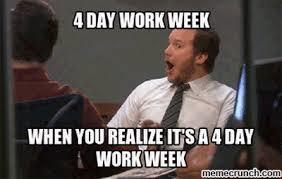
Retirement may be wonderful for those who can afford it. For those of us who can't...yet...we should at least enjoy the rewards of a physically active job...nearly half the week off to ourselves...good medical benefits...and paid time off.
Finally, the second shift allows me to write seven days a week. So I'm a happy camper--with a train trip coming up in November.

In Seattle I cut down to one job, a relief. Even so, though, weekends were never enough. Half the weekend, generally, was spent recovering from work stress.

I'd continued to write. In fact, I'd succeeded in putting on speed, close now to putting out one book a year. But I'd pretty much given up on having an actual life.
Until now. I quit my office job and took a position that offers: future transfer, if I like, to any major city in the country...good benefits...a physically challenging position that helps me stay in shape...discounts on the best and healthiest organic food...and:
a 4-day week, if I like.
I like--and I've arranged it.

Retirement may be wonderful for those who can afford it. For those of us who can't...yet...we should at least enjoy the rewards of a physically active job...nearly half the week off to ourselves...good medical benefits...and paid time off.
Finally, the second shift allows me to write seven days a week. So I'm a happy camper--with a train trip coming up in November.

Published on September 03, 2017 09:47
August 18, 2017
Taking Out the Trash
Sometimes more courage goes into taking out the garbage than climbing Kilimanjaro.
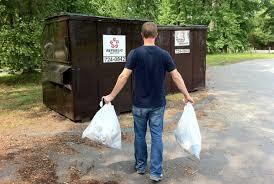
You know the sort of trash I mean: from haunting regrets to lingering messes we made years ago, then allowed to remain.
Getting rid of the trash may prove tougher than lugging two bags to a dumpster. But, as I learned yesterday, the relief makes it well worth whatever it takes.
I had three messes I needed to clear from my life. And doing so took up a good part of my day: phone calls, emails, certified mail, running here and running there. At the end of the day I was lighter by three messes I'd come to accept as 'my life'. Lesson learned.
Taking out the trash may prove painful. Or costly. Or just difficult to do. We may need to write off a beloved old friend who no longer wants to be one. We may need to find a way to make peace with something we've done...or not done. We may need to take guilt, shame, envy or anger to the dump heap.
The price may be high but it's worth it. When the time is right, set aside a day for a test of your own.
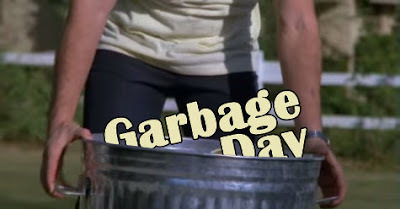

You know the sort of trash I mean: from haunting regrets to lingering messes we made years ago, then allowed to remain.
Getting rid of the trash may prove tougher than lugging two bags to a dumpster. But, as I learned yesterday, the relief makes it well worth whatever it takes.
I had three messes I needed to clear from my life. And doing so took up a good part of my day: phone calls, emails, certified mail, running here and running there. At the end of the day I was lighter by three messes I'd come to accept as 'my life'. Lesson learned.
Taking out the trash may prove painful. Or costly. Or just difficult to do. We may need to write off a beloved old friend who no longer wants to be one. We may need to find a way to make peace with something we've done...or not done. We may need to take guilt, shame, envy or anger to the dump heap.
The price may be high but it's worth it. When the time is right, set aside a day for a test of your own.

Published on August 18, 2017 08:43
July 29, 2017
If Women Don't Look At Men's Shoes First, They Should
When's the last time you walked into a shoe store and found a clerk who knew his or her stuff...or even found a clerk at all?

While we're on the subject, when's the last time you regarded shoes as a top priority and were willing to hunt till you got the right pair, regardless of the cost?
A screaming purple pinkie toe last night straightened me out on the subject of shoes. My new job, you see, keeps me on my feet all day and I walk between 8-10 miles per shift. So, naturally, I jumped at the company's offer to provide a pair of slip-resistant work shoes from their mail order supplier. What size? Hell, I've been sold 11.5 or 12 size for all my adult life. So I ordered 12's, thinking that I could return them or slip in some insoles. Relief either way from the toe-pinching sneakers I'd bought for a song at Ross Dress For Less.
Smart women will avoid all men who buy mail order shoes and/or wear any shoe that doesn't fit.
Tell me about that! For a week I'd been wearing the poorly fitting but 'free' work shoes, in discomfort from the start. By last night, I could barely walk and came home to see that my right pinkie toe had turned to a dark purple bordering on black. The pinkie looked far worse than this and other toes too were afllicted with blisters.

My brain teemed with the worst panicky thoughts. Might I lose the toe...or foot? Would I lose my job if I took time off work? What if I needed a couple of weeks? Could I afford a first-rate, properly fitting pair of shoes--and where would I find them? In my experience, department stores were as useless as discount shoe outlets.
Late night decisions: come morning, I'd call work, explain my situation and spend as much time as I needed to find my first real pair of quality shoes.
Bright and early, I called work, encouraged to take whatever time I needed. Next, Lady Google: I started by researching a store I'd passed by many times: The Walking Company. Their reviews were strong and I noted that they specialized in what they call custom orthotics: insoles tailored to an individual's foot size and walking patterns.
This store was my first, and last, stop. The prices were steeper than I'd hoped, but I let the sales clerk do his thing. He showed me several styles offering a wider 'shoe box' (front of the shoe), so that my toes wouldn't be pinched. Then he showed me how they size one's foot and pick the right orthotic, using a digital screening device.
I tried the shoe on without the orthotic--then with.
 pinkie toes
pinkie toes
Tomorrow I'll return to work, when the pinkie's toned down from purple to a paler shade of pink.
And this is good. But better still is the change in my outlook that came with the shoe. And here are the reasons I think that women should first check out a man's shoes:
1) Good shoes aren't accessories. They're fundamental reflections of a man's care and respect for his bod.
2) Good shoes aren't an extravagance. A man who buys and looks after the best is an enlightened pragmatist. For cheap shoes end up costing more in foot, knee or back pain...and eventually doctor's bills.
3) Good shoes are spirit as much as fashion statements. A solid, first-class, grounded look paves the way for a splash of color or a touch of whimsy elsewhere.
So, I guess, in a way I need to thank the purple pinkie toe that filled my eyes with tears.

While we're on the subject, when's the last time you regarded shoes as a top priority and were willing to hunt till you got the right pair, regardless of the cost?
A screaming purple pinkie toe last night straightened me out on the subject of shoes. My new job, you see, keeps me on my feet all day and I walk between 8-10 miles per shift. So, naturally, I jumped at the company's offer to provide a pair of slip-resistant work shoes from their mail order supplier. What size? Hell, I've been sold 11.5 or 12 size for all my adult life. So I ordered 12's, thinking that I could return them or slip in some insoles. Relief either way from the toe-pinching sneakers I'd bought for a song at Ross Dress For Less.
Smart women will avoid all men who buy mail order shoes and/or wear any shoe that doesn't fit.
Tell me about that! For a week I'd been wearing the poorly fitting but 'free' work shoes, in discomfort from the start. By last night, I could barely walk and came home to see that my right pinkie toe had turned to a dark purple bordering on black. The pinkie looked far worse than this and other toes too were afllicted with blisters.

My brain teemed with the worst panicky thoughts. Might I lose the toe...or foot? Would I lose my job if I took time off work? What if I needed a couple of weeks? Could I afford a first-rate, properly fitting pair of shoes--and where would I find them? In my experience, department stores were as useless as discount shoe outlets.
Late night decisions: come morning, I'd call work, explain my situation and spend as much time as I needed to find my first real pair of quality shoes.
Bright and early, I called work, encouraged to take whatever time I needed. Next, Lady Google: I started by researching a store I'd passed by many times: The Walking Company. Their reviews were strong and I noted that they specialized in what they call custom orthotics: insoles tailored to an individual's foot size and walking patterns.
This store was my first, and last, stop. The prices were steeper than I'd hoped, but I let the sales clerk do his thing. He showed me several styles offering a wider 'shoe box' (front of the shoe), so that my toes wouldn't be pinched. Then he showed me how they size one's foot and pick the right orthotic, using a digital screening device.
I tried the shoe on without the orthotic--then with.
 pinkie toes
pinkie toesTomorrow I'll return to work, when the pinkie's toned down from purple to a paler shade of pink.
And this is good. But better still is the change in my outlook that came with the shoe. And here are the reasons I think that women should first check out a man's shoes:
1) Good shoes aren't accessories. They're fundamental reflections of a man's care and respect for his bod.
2) Good shoes aren't an extravagance. A man who buys and looks after the best is an enlightened pragmatist. For cheap shoes end up costing more in foot, knee or back pain...and eventually doctor's bills.
3) Good shoes are spirit as much as fashion statements. A solid, first-class, grounded look paves the way for a splash of color or a touch of whimsy elsewhere.
So, I guess, in a way I need to thank the purple pinkie toe that filled my eyes with tears.
Published on July 29, 2017 15:56



